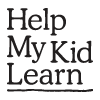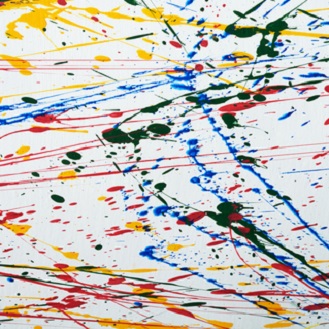What to do with this activity?
Splatter painting is messy and fun. The results can be satisfying for young artists, especially when they lay objects onto paper that leave a blank in a nice shape.
Try placing different shaped fallen leaves, or a pair of scissors, or a cut-out shape like a star or flower, onto the paper, then splatter paint over the page. When the paint has dried, lift the shapes off the page and admire the blank spaces they leave behind.
For ideas on how to use masking tape (that will lift) to create shapes, perhaps numbers, look here. Get some more ideas for shapes here and here, including how to use old toothbrushes to finely splatter the paint.
Any activity that gets your child using their hands, and thinking about what to make and how to make it, will develop their creativity and their fine motor skills which will help with hand writing later.
-
Why am I doing this?
There are at least four stages in learning to write. The first is movement - your child learning to control their body and their hands - reaching, feeling and holding things - is part of this first stage.
The second stage is making marks - seeing that if you put this crayon here and move it, it makes a mark.
Drawing is a third stage.
The fourth then is learning how to make letters and later words.
For your child, the more they are aware about how useful writing is, the better. Seeing you writing is great and you pointing out other people writing will help them see how useful it is too.
-
How can I do more?
It’s always good to keep crayons and paper close at hand, so that you can give them to your child anytime to play with.
Write words under your child’s drawing – like their name or what they have drawn – that will help them understand the meaning of words.
Later you could clip 10 or 12 of these drawings together to make a book. This will show your child how books can be made.
Let your child see you writing – notes, lists, letters and emails. If you don't write much yourself, show your child other people writing when you are out and about.
Encourage your child to use ‘pretend’ writing in play - writing their own name, notices or price lists. You could even give them a little notebook when you go to the shops or when they’re playing ‘shop’ with their friends.
Rate this activity
![]()
![]()
![]()
![]()
![]()
Based on 27 reviews
How would you rate it?
1 = Poor, 5 = Great.



